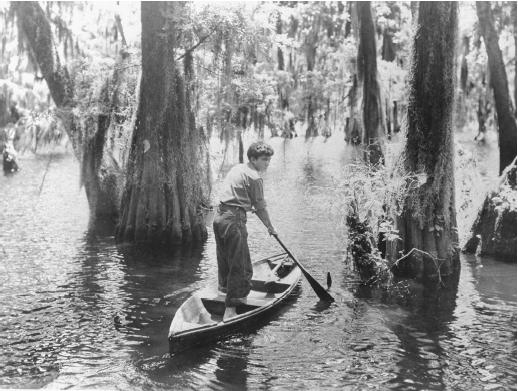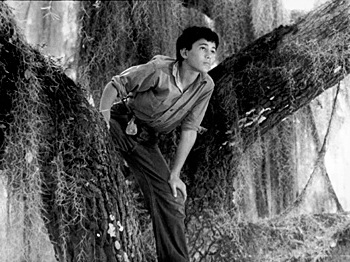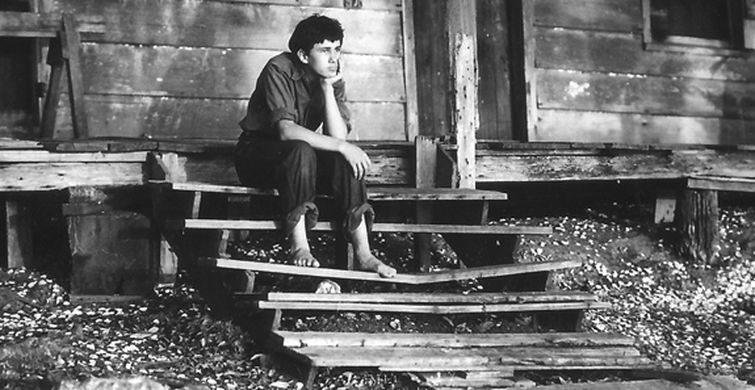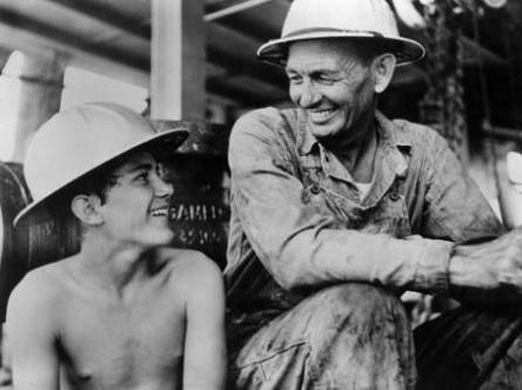 American filmmaker Robert Flaherty found fame producing and directing what we would today call “docudramas”, about people in exotic places. His first film, Nanook of the North (1922) about an Inuk hunter in the Canadian arctic, was a worldwide success. The film was acted out and staged in a way that disqualifies it as a “documentary” in the sense we use the word today — Nanook was really named Allakariallak, his “wife” wasn’t his wife, and so on, but there were no rules about such things at the time. It really amounted to what historical re-enactors do today. Flaherty followed this success, over the years with Moana (1926), set in Polynesia, Man of Aran (1934) set on an Irish coastal island, and Elephant Boy (1937), which turned a young Kannadiga boy from Mysore, Sabu Dastagir, into a Hollywood movie star.
American filmmaker Robert Flaherty found fame producing and directing what we would today call “docudramas”, about people in exotic places. His first film, Nanook of the North (1922) about an Inuk hunter in the Canadian arctic, was a worldwide success. The film was acted out and staged in a way that disqualifies it as a “documentary” in the sense we use the word today — Nanook was really named Allakariallak, his “wife” wasn’t his wife, and so on, but there were no rules about such things at the time. It really amounted to what historical re-enactors do today. Flaherty followed this success, over the years with Moana (1926), set in Polynesia, Man of Aran (1934) set on an Irish coastal island, and Elephant Boy (1937), which turned a young Kannadiga boy from Mysore, Sabu Dastagir, into a Hollywood movie star.
 But to my mind, Flaherty’s greatest achievement was his last feature film, Louisiana Story (1948). It was commissioned by the Shell Oil Company to convey the “romance” of the introduction of an oil rig to the Louisiana bayous. This is the sort of idea that would leave an audience cold today, but it no doubt was completely sincere in 1948. But Flaherty wasn’t much interested in oil rigs. He was interested in the exotic atmosphere of Cajun life in the bayous and in the innocent wonderment of the boy. Flaherty usually took real people and made movies about them. But in this case, a narrative was contrived, and a local boy, Joseph Boudreaux played a character in reasonably true-to-life scenes. He was so photogenic that the camera hardly ever left him. The cinematography, by Richard Leacock, was crisp and evocative, all the more impressive because the lighting conditions must have been dreadful. The swamps of the bayou loomed like some fantastic, alien landscape. A bonus was the superb music by Virgil Thompson, a composer who once loomed large in American concert halls, but is unfortunately neglected today. Boudreaux, by the way, grew up to be an oil rigger.
But to my mind, Flaherty’s greatest achievement was his last feature film, Louisiana Story (1948). It was commissioned by the Shell Oil Company to convey the “romance” of the introduction of an oil rig to the Louisiana bayous. This is the sort of idea that would leave an audience cold today, but it no doubt was completely sincere in 1948. But Flaherty wasn’t much interested in oil rigs. He was interested in the exotic atmosphere of Cajun life in the bayous and in the innocent wonderment of the boy. Flaherty usually took real people and made movies about them. But in this case, a narrative was contrived, and a local boy, Joseph Boudreaux played a character in reasonably true-to-life scenes. He was so photogenic that the camera hardly ever left him. The cinematography, by Richard Leacock, was crisp and evocative, all the more impressive because the lighting conditions must have been dreadful. The swamps of the bayou loomed like some fantastic, alien landscape. A bonus was the superb music by Virgil Thompson, a composer who once loomed large in American concert halls, but is unfortunately neglected today. Boudreaux, by the way, grew up to be an oil rigger.



0 Comments.